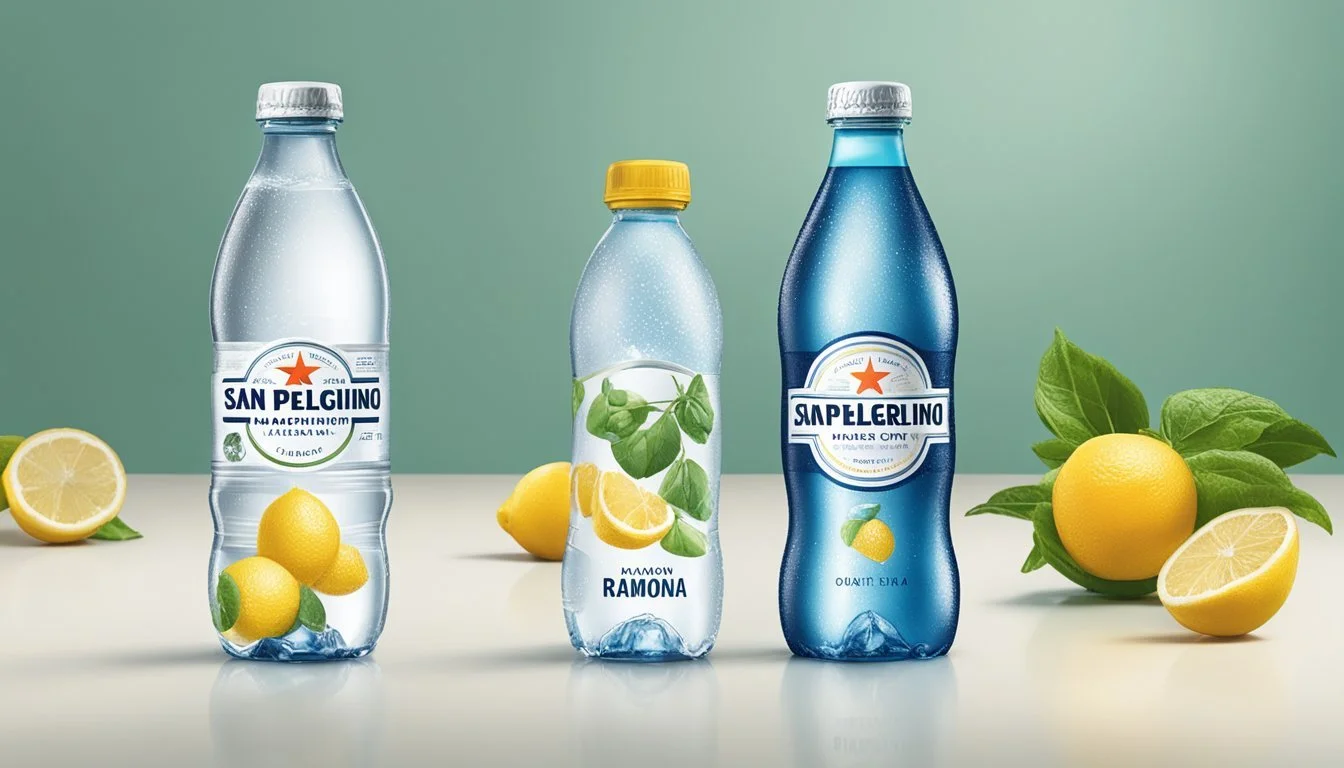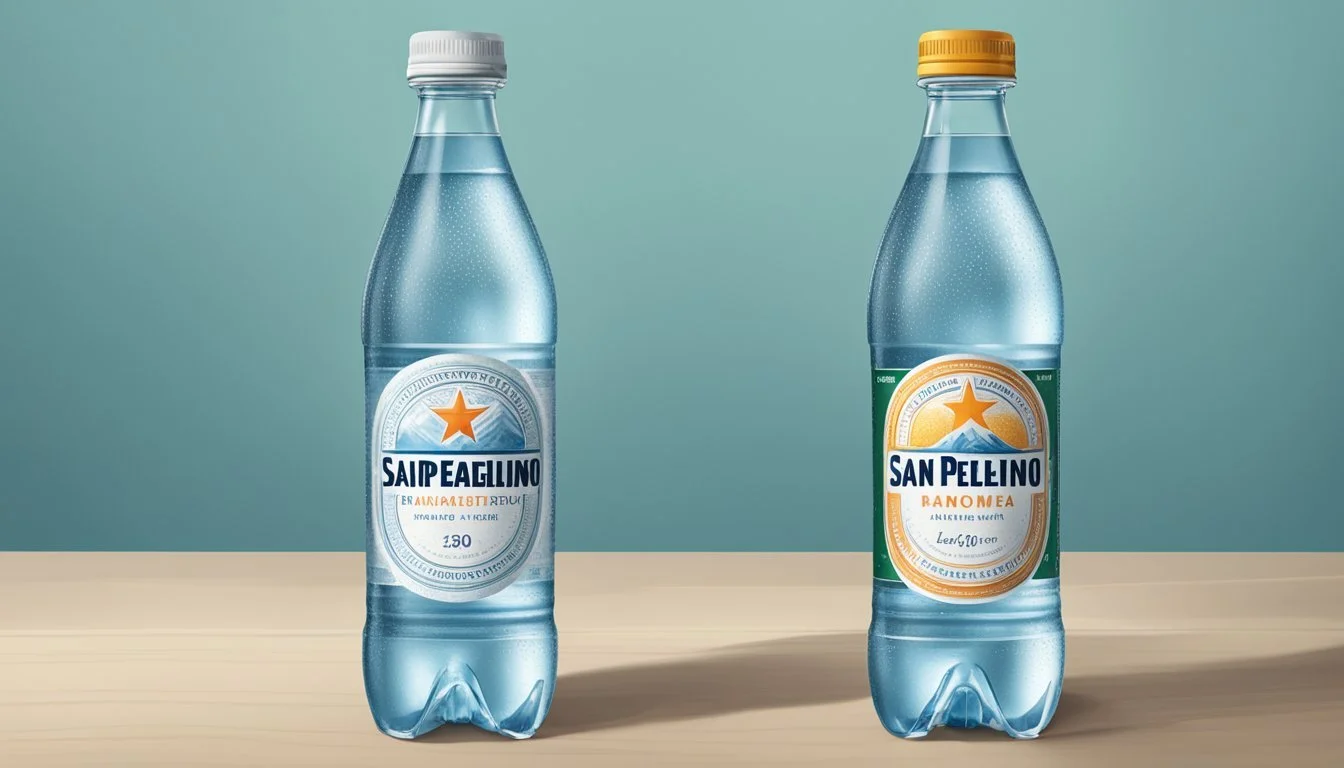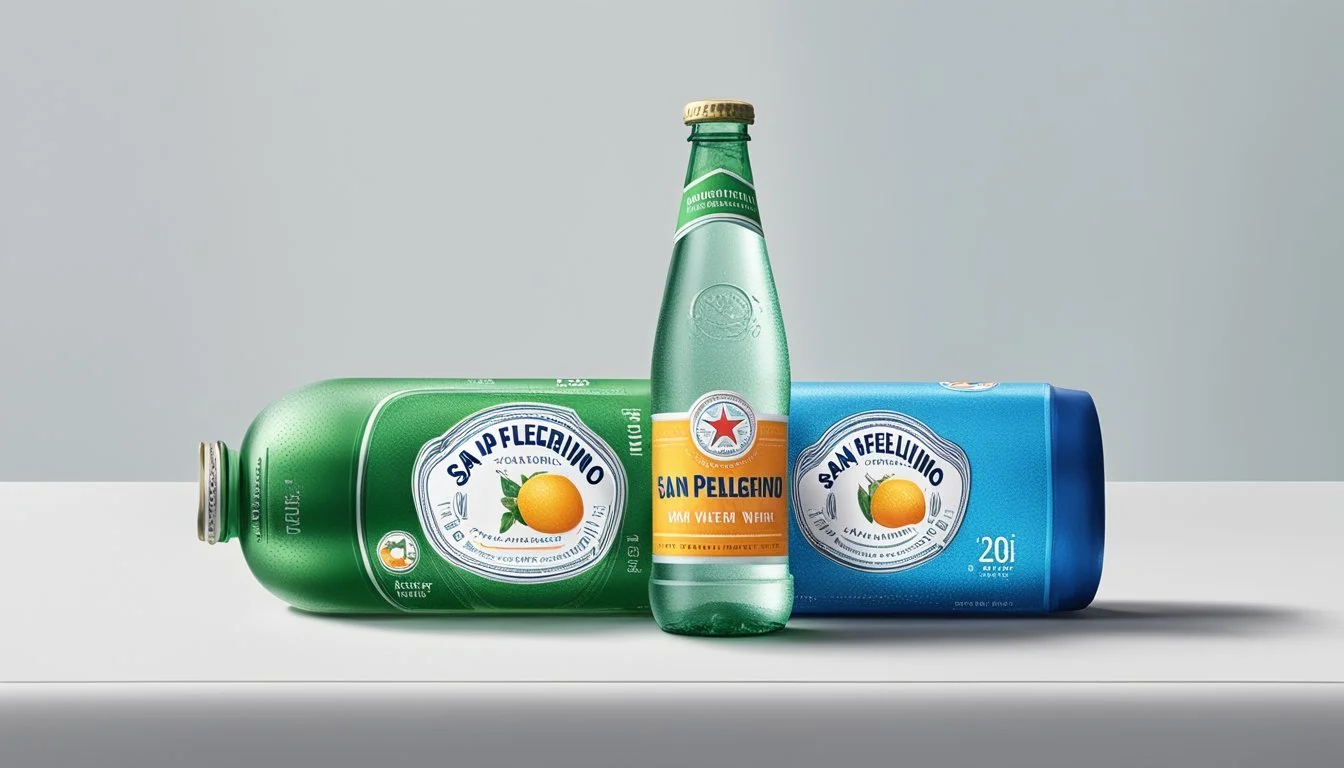San Pellegrino vs. Ramona
Comparing Quality and Taste
When choosing between San Pellegrino and Ramona, discerning consumers often look at various factors including taste, carbonation, and health benefits. San Pellegrino, a sparkling mineral water from Italy, offers a slightly more acidic pH of 5.6, making it a popular choice for those who enjoy a sharper taste. Ramona, on the other hand, provides a distinct and satisfying flavor profile, appealing to those who prioritize a balanced, refreshing drink.
Temperature can play a key role in enhancing the drinking experience. San Pellegrino is best enjoyed chilled at 6-8°C (43-46°F), which accentuates its sparkling qualities. This makes it a perfect companion for meals or as a standalone refreshment. In contrast, Ramona's flavor nuances can be appreciated at a variety of temperatures, making it a versatile option for different occasions.
Ultimately, the choice between San Pellegrino and Ramona depends on personal preference, with San Pellegrino favored for its robust carbonation and unique mineral content, and Ramona standing out for its well-rounded taste and adaptability. By understanding the specific qualities of each brand, consumers can make an informed decision that best suits their palate and hydration needs.
Comparing the Sources
San Pellegrino and Ramona come from distinct locations and have unique mineral compositions. Their sources and natural spring origins contribute significantly to their differences in taste and health benefits.
Origin and Natural Spring
San Pellegrino water originates from the Italian Alps. Specifically, its source is an aquifer located in the town of San Pellegrino Terme. The water here is naturally mineralized as it filters through layers of dolomite and limestone over 30 years. This geological process infuses the water with minerals. The Alpine environment ensures a pristine and consistent quality.
Ramona, on the other hand, is sourced from a natural spring in Tuscany. The spring is surrounded by lush landscapes, conducive to maintaining the purity of the water. Like San Pellegrino, the water undergoes natural filtration through underground rock layers. The Tuscan setting provides a different mineral profile while retaining its own unique and fresh character.
Mineral Content and Health Benefits
San Pellegrino is renowned for its rich mineral content. It contains calcium, magnesium, and sodium, among other minerals. The presence of these minerals contributes to the water's refreshing taste and potential health benefits. Calcium and magnesium are crucial for bone health and muscle function, while sodium helps in maintaining electrolyte balance.
Ramona mineral water also boasts a well-balanced mineral profile. It includes essential minerals like electrolytes that aid in hydration. The alkaline nature of Ramona can help in neutralizing acidity in the body, supporting overall health. Though not as heavily mineralized as San Pellegrino, Ramona provides a softer taste and remains a wholesome option for daily consumption.
Production Methods and Quality
San Pellegrino and Ramona use distinct production methods that contribute to their unique qualities. The following sections explore their respective bottling and carbonation techniques, as well as their quality assurance and standards.
Bottling and Carbonation Techniques
San Pellegrino sources its water from the Italian Alps. The water undergoes natural carbonation, where carbon dioxide is added to the water in its natural state. This process is aimed at preserving the water’s minerals and providing a stable level of carbonation that is often favored by sparkling water enthusiasts.
Ramona takes a different approach. It focuses on meticulous bottling procedures to ensure purity. The water is typically mined from pristine, underground sources and treated for clarity. Unlike many commercial waters, Ramona’s natural carbonation provides a smooth and consistent bubble, which many find appealing.
Flow, another noteworthy brand, emphasizes eco-friendly cartons, offering an alternative to traditional glass or plastic. While Flow's method does not involve carbonation, its commitment to environmental sustainability sets it apart from traditional bottled waters.
Quality Assurance and Standards
San Pellegrino adheres to strict quality standards, maintaining compliance with European regulations. The brand’s commitment to consistent quality is evident in its continued reputation as a premium choice. Regular testing ensures that it meets specific EPA guidelines for bottled water, including stringent checks for contaminants.
Ramona equally prioritizes quality assurance. The company employs advanced filtration systems to remove impurities and engage in frequent quality tests. These standards ensure that Ramona remains neutral in taste and safety, meeting or exceeding industry benchmarks.
Ultimately, while both brands prioritize safety and quality, each brings its distinct expertise to the production process. San Pellegrino's legacy of traditional methods contrasts with Ramona's modern, meticulous approach, offering consumers varied options based on their preferences.
Taste Profile Analysis
San Pellegrino and Ramona offer distinct taste experiences rooted in their unique mineral compositions and source characteristics.
Flavor and Texture Comparison
San Pellegrino is renowned for its crisp flavor and slight bitterness, which comes from its rich mineral content. The sparkling water has a gentle effervescence that enhances its refreshing qualities.
Ramona, while less famous, provides a smoother texture and less pronounced minerality. Its taste is subtler, making it a good palate cleanser.
San Pellegrino’s higher minerality gives it a more pronounced taste, while Ramona’s subtle notes appeal to those preferring a less intense flavor.
Expert Opinions and Water Sommelier Insights
Water sommeliers often highlight San Pellegrino's complex minerals and its suitability as an accompaniment to meals. The balance of carbonation and minerality makes it a popular choice in fine dining.
Ramona, praised for its mild flavor, is often recommended for those who prefer less minerality. Experts note that it serves as an effective palate cleanser due to its softer taste and lower mineral content.
Different palates might appreciate either water depending on personal preference and the context of consumption.
Health and Hydration Factors
San Pellegrino and Ramona both offer distinct benefits when it comes to health and hydration. Each brand provides unique mineral compositions and alkalinity levels, influencing how they impact bodily functions and fluid balance.
Minerals and Hydration
San Pellegrino is renowned for its rich mineral content. It includes magnesium (52 mg/L) and sulfates, essential for supporting digestive health. These minerals not only aid in digestion but also play crucial roles in hydration and overall wellness.
Ramona, being a still water like Acqua Panna, does not have the carbonation of San Pellegrino. The absence of carbonation makes it a more direct choice for those sensitive to sparkling water. It also helps in maintaining hydration without the potential bloating associated with sparkling beverages.
In mineral content, Ramona is less concentrated but still offers vital electrolytes that are key to maintaining fluid balance within the body. Despite lower mineral levels compared to San Pellegrino, Ramona provides a solid essential hydration source, making it a suitable option for daily consumption.
Alkalinity and Body Balance
San Pellegrino has a pH level that is slightly alkaline, which can help balance the body's pH level. This alkalinity can assist in counteracting the acid-forming foods and beverages that many people consume regularly. An alkaline diet is often associated with detoxification and improved oxygen levels in the blood.
On the other hand, Ramona's pH level is neutral. While it doesn't offer the same alkaline benefits as San Pellegrino, it strikes a balance that prevents the over-acidification of the body. This neutral pH ensures that it is gentle on the stomach and suitable for those who prefer a more neutral hydration option.
Both waters support body balance but do so through different mechanisms, tailored to varying preferences and health considerations.
Environmental Impact and Sustainability
San Pellegrino and Ramona adopt several strategies aimed at reducing environmental impact and enhancing sustainability. From the bottling process to broader sustainable practices, both brands are committed to preserving natural resources and minimizing their carbon footprint.
Bottling Process and Ecology
San Pellegrino sources its water from natural springs in the Italian Alps, ensuring high mineral content and quality. This water is bottled in both glass and plastic bottles, with a pronounced focus on reducing ecological impact. Glass bottles are especially favored for their recyclability.
Ramona prides itself on using glass bottles exclusively, reducing plastic waste significantly. The brand opts for eco-friendly packaging, contributing to a lower environmental footprint. By prioritizing sustainable materials, both brands aim to lessen their ecological impact.
Sustainable Practices and Policies
San Pellegrino has committed to achieving carbon neutrality. By 2022, the brand aims to cancel all emissions associated with its products, including San Pellegrino and Acqua Panna. This is achieved by using renewable energy sources, which have already cut greenhouse gases by 60%.
Ramona, though smaller, also focuses on sustainability. The company integrates eco-friendly practices across its operations, from sourcing to packaging. These efforts are reflected in reduced energy consumption and waste. Such policies reinforce both brands’ dedication to environmental stewardship.
Packaging and Brand Presentation
Both San Pellegrino and Ramona take great pride in their packaging, offering distinct designs and branding that appeal to their respective audiences. The focus will be on bottle design and aesthetics, as well as labeling and brand identity.
Bottle Design and Aesthetics
San Pellegrino is widely recognized for its classic glass bottles that exude a sense of elegance and timeless charm. The shapes are typically sleek and ergonomic, making them easy to hold and pour.
Ramona, on the other hand, tends to use cans that feature modern, vibrant designs. This choice caters to a younger, more dynamic consumer base, reflecting a trendier and more casual lifestyle.
Both brands use their packaging to enhance the drinking experience. For instance, San Pellegrino's glass material keeps beverages at a stable temperature longer, contributing to a more enjoyable, chilled drink. Ramona’s use of cans is ideal for casual social settings and portability, reinforcing its image as a fun and contemporary choice.
Labeling and Brand Identity
San Pellegrino’s labels are iconic, featuring its signature star emblem and intricate detailing that speaks to the brand's rich Italian heritage. The labels are often minimalistic yet sophisticated, using classic colors that reflect the purity and premium quality of the water.
Ramona, conversely, opts for bold, colorful graphics that are easily recognizable. The use of bright colors and playful fonts aligns with its brand identity, which emphasizes a bold, lively, and youthful spirit.
The differentiation in labeling extends to how each brand communicates its message. San Pellegrino focuses on tradition and quality, whereas Ramona highlights fun and modernity. These labeling strategies are crucial in making each brand stand out in a competitive market.
Market Presence and Consumer Choice
San Pellegrino and Ramona occupy distinct niches in the bottled water market, appealing to different consumer preferences and demographics. This section explores their market performance and the factors influencing consumer choices.
Popularity and Sales Data
San Pellegrino, an established brand, has a strong presence worldwide. It is well-known for its sparkling mineral water. Market data indicates robust sales figures, reflecting its widespread popularity and commanding market share.
Ramona, on the other hand, caters to a niche market. Specializing in high-quality, artisanal spring water, it has a more modest but loyal customer base. Its sales numbers, while not as high as San Pellegrino, show steady growth.
San Pellegrino's positioning focuses on premium quality, backed by significant advertising efforts. It is often priced higher, which appeals to consumers seeking luxury. Ramona tends to be priced competitively, attracting those looking for an artisanal product without the premium price tag.
Consumer Preferences and Trends
When it comes to consumer preferences, the choice between San Pellegrino and Ramona often hinges on specific tastes and lifestyle habits. San Pellegrino's sparkling water appeals to those who enjoy effervescence and a sophisticated, European vibe.
Ramona, with its still and crisp water, attracts consumers who prefer a simpler, less processed option. Trends indicate a growing interest in artisanal and locally sourced products, which benefits Ramona.
Demographics play a key role in consumer behavior. San Pellegrino tends to attract older, affluent customers with a penchant for premium brands. Ramona's customer base skews younger and more diverse, reflecting a broader trend towards sustainability and artisanal goods.
Social media trends and endorsements also impact consumer choices, with both brands leveraging influencer marketing to boost visibility and desirability among different audience segments.
The Bottom Line
When comparing San Pellegrino and Ramona, several factors should be considered to guide consumers in choosing the best option for their preferences.
San Pellegrino is known for its sparkling quality and crisp taste. Best served at 6-8°C (43-46°F), its effervescence and mineral content offer a refreshing experience.
Ramona, on the other hand, is still water with a smooth texture and neutral flavor. It lacks the carbonation found in San Pellegrino, making it an ideal choice for those who prefer non-sparkling water.
In terms of availability, both brands are widely accessible in various sizes. San Pellegrino often comes in 500ml to 1-liter bottles, while Ramona is available in similar increments.
Consumers looking for an enjoyable, effervescent drinking experience may favor San Pellegrino. For those who prefer still water, Ramona offers a simpler, clean option.
Price points also play a role. San Pellegrino’s premium brand positioning usually means higher costs compared to Ramona, which is typically priced more competitively.
Quick Comparison
Feature San Pellegrino Ramona Type Sparkling Still Best Served At 6-8°C (43-46°F) Room Temperature Texture Effervescent Smooth Flavor Crisp, Mineral Neutral Price Range Higher Moderate
Recommending either comes down to individual preferences. Sparkling enthusiasts may lean towards San Pellegrino, while those who enjoy still water could prefer Ramona.
More About San Pellegrino
Acqua Panna vs San Pellegrino: Which Bottled Water is Better?
Boxed Water vs San Pellegrino: Which Bottled Water is Better?
Core Hydration vs San Pellegrino: Which Bottled Water is Better?
Ice Mountain vs San Pellegrino: Which Bottled Water is Better?
Icelandic Glacial vs San Pellegrino: Which Bottled Water is Better?
Just Water vs San Pellegrino: Which Bottled Water is Better?
Mountain Valley Spring Water vs San Pellegrino: Which Bottled Water is Better?
Nestle Pure Life vs San Pellegrino: Which Bottled Water is Better?
Poland Spring vs San Pellegrino: Which Bottled Water is Better?
San Pellegrino vs Alkaline88: Which Bottled Water is Better?
San Pellegrino vs Aqua Carpatica: Which Bottled Water is Better?
San Pellegrino vs Cascade Mountain: Which Bottled Water is Better?
San Pellegrino vs Castle Rock: Which Bottled Water is Better?
San Pellegrino vs CBD Living: Which Bottled Water is Better?
San Pellegrino vs Crystal Geyser: Which Bottled Water is Better?
San Pellegrino vs Crystal Lake: Which Bottled Water is Better?
San Pellegrino vs Essence pH10: Which Bottled Water is Better?
San Pellegrino vs Hawaii Volcanic: Which Bottled Water is Better?
San Pellegrino vs Hawaiian Springs: Which Bottled Water is Better?
San Pellegrino vs Kirkland Signature: Which Bottled Water is Better?
San Pellegrino vs Liquid Death: Which Bottled Water is Better?
San Pellegrino vs Open Water: Which Bottled Water is Better?
San Pellegrino vs Proud Source: Which Bottled Water is Better?
San Pellegrino vs Purely Sedona: Which Bottled Water is Better?
San Pellegrino vs Richard's Rainwater: Which Bottled Water is Better?
San Pellegrino vs Simple Truth: Which Bottled Water is Better?
San Pellegrino vs Smartwater: Which Bottled Water is Better?
San Pellegrino vs Solan de Cabras: Which Bottled Water is Better?
San Pellegrino vs Talking Rain AQA: Which Bottled Water is Better?
San Pellegrino vs Topo Chico: Which Bottled Water is Better?
San Pellegrino vs Weird Water: Which Bottled Water is Better?
San Pellegrino vs Whole Foods 365: Which Bottled Water is Better?
San Pellegrino vs Whole Foods Italian Still Mineral water: Which Bottled Water is Better?
San Pellegrino vs Zephyrhills: Which Bottled Water is Better?








